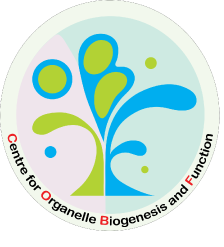What is Areas of Excellence Scheme (AoE)?
Following a comprehensive review of higher education of Hong Kong, the University Grants Committee (UGC) advised the Government in a report published in October 1996 that Hong Kong would need world-class institutions with distinct areas of excellence in order to retain its leading economic position in the development of China and the Pacific Rim. The UGC recommended, and the Government agreed, that the UGC-funded institutions should build upon their existing strengths and develop them into Areas of Excellence (AoE).
Such Areas would be recognised internationally as of equal status to their peers in the same subject areas, and justify the additional investment in state-of-the-art facilities and activities which would maintain them among the world leaders.
The AoE Scheme was launched by the UGC in 1998. With effect from February 2012, the AoE Scheme has been transferred to the RGC. Six rounds of AoE exercises had been undertaken.
Centre for Organelle Biogenesis and Function awarded the sixth round of AoE
Total Funding Approved
HK$47.25M
Coordinating Institution
The Chinese University of Hong Kong
(Prof. Jiang Liwen)
The centre focuses on understanding the biogenesis and functions of three organelles, namely, Golgi, TGN and EXPO. This research will not only address the fundamental questions concerning organelle biogenesis and functions in important biological processes, such as cell wall formation and stress signaling pathways in plants, but will also have potential applications for the biotechnology industry in Hong Kong and China, including improving the value of plants as biofuel feedstocks and enhancing crop productivity in high-stress environments.
Abstract
The existence of all eukaryotic cells, plant and animal, depends upon the maintenance of organelles within them. Organelles are membrane-bound compartments that contain specialized environments where crucial complex biochemical processes occur. Organelles are essential for cell-cell communications and for an organism’s homeostasis, growth and development as well as for responses to the environment. However, the underlying mechanisms of organelle biogenesis and protein traffic communications among them remain elusive. Over the past ten years, our research programs in Hong Kong have made internationally recognized contributions towards understanding protein trafficking, organelle dynamics and functions in model organisms including plants, yeast and mice. For example, in plant cells, we first identified the multivesicular body (MVB) as a prevacuolar compartment (PVC), defined the trans-Golgi network (TGN) as an early endosome, and discovered a novel organelle termed EXPO (Exocyst-positive Organelle) mediating an unconventional protein secretion (UPS). Similarly, we identified novel Golgi-retention mechanisms for glycosyltransferases (GTases) in yeast and Arabidopsis EMPs (endomembrane proteins), and elucidated the roles of PICK1 (Protein Interacting with C-Kinase 1) in AMPA receptor trafficking and synaptic plasticity in mice brains. This documented scientific expertise and leadership in multiple disciplines provides the opportunity and rationale for forming a team to establish the Centre for Organelle Biogenesis and Function that will bring together team members with excellent track records to focus on a broad theme of organelle biogenesis and function, using a combination of cellular, molecular, biochemical, physiological, genetic and omics approaches in model organisms. The present proposal focuses on understanding the Biogenesis and Function of three organelles: Golgi, TGN and EXPO. Our research will not only address the fundamental questions concerning organelle biogenesis and function in important biological processes, such as cell wall formation and stress signaling pathways in plants, but will also have potential applications for the biotechnology industry in Hong Kong and China to improve the value of plants as biofuel feedstocks and to enhance crop productivity in high-stress environments.
PC
Prof. JIANG Liwen, School of Life Sciences, CUHK
Co-PI (s)
Prof. BANFIELD David K, Division of Life Science, HKUST
Prof. LAM Hon-ming, School of Life Sciences, CUHK
Prof. WONG Kam-bo , School of Life Sciences, CUHK
Prof. XIA Jun, Division of Life Science, HKUST
Prof. XIA Yiji, Department of Biology, HKBU
Prof. YAO Xiaoqiang, School of Biomedical Sciences, CUHK
Co-I (s)
Prof. CHAN Edwin Ho-yin,School of Life Sciences, CUHK
Prof. CHAN Raymond Hon-fu, Department of Mathematics, CityU
Prof. CHYE Mee-Len, School of Biological Sciences, HKU
Prof. GE Wei, Faculty of Health Sciences, University of Macau
Prof. GUO Yusong, Division of Life Science, HKUST
Prof. HE Junxian, School of Life Sciences, CUHK
Prof. KANG Byung-Ho , School of Life Sciences, CUHK
Prof. KWAN Kin-ming, School of Life Sciences, CUHK
Prof. THIERRY Blu, Department of Electronic Engineering, CUHK
Prof. ZHANG Jianhua, Faculty of Science, HKBU
Affiliated Member
Prof. Zhuang Xiaohong, School of Life Sciences, CUHK
Collaborators
Prof. LIN Hongxuan, Institute of Plant Physiology and Ecology, Shanghai Institute Foor Biological Sciences, Chinese Academy of Sciences, China
Prof. LIU Chang-jun, Biology Department, Brookhaven National Laboratory, USA
Prof. SCHEKMAN Randy W, Department of Molecular & Cell Biology, University of California at Berkeley, USA
Prof. ZHANG Qifa, College of Life Science and Technology, Huazhong Agricultural University, China

